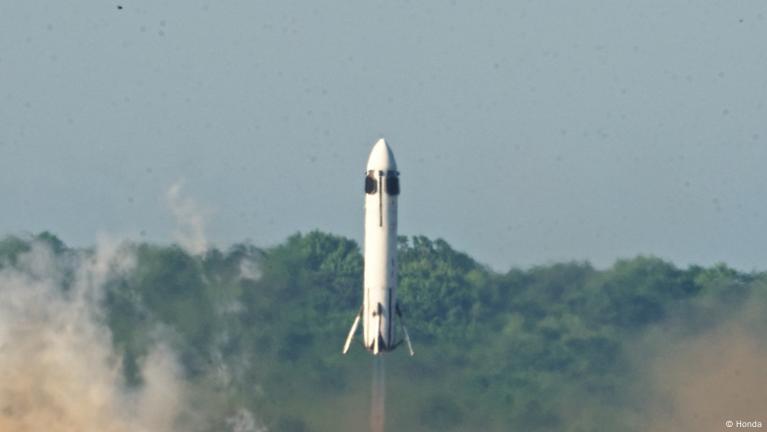Honda, known worldwide for its cars and motorcycles, has made a surprising leap into the aerospace sector. The Japanese company’s research division, Honda R&D, successfully tested a small reusable rocket, signaling its ambition to enter the satellite launch market. While far from SpaceX’s scale, Honda’s rocket test marks an important step in diversifying the space launch industry.
What’s Happening & Why This Matters
On a clear day in Hokkaido, Japan, Honda launched and landed an experimental reusable rocket that soared nearly 900 feet (about 274 meters) before touching down just 14.5 inches from its target point. The rocket, named the Reusable Launch Vehicle (RLV), stands 6.3 meters tall and weighs 1,312 kilograms fueled, or 900 kilograms empty.
The flight lasted roughly one minute and aimed to demonstrate core technologies essential for rocket reuse: flight stability during ascent and descent, and precise landing control. Honda’s engineers filmed the launch, sharing the success to mark progress in their research.
Although the RLV cannot match the power or capacity of SpaceX’s Falcon 9 rocket—which stands 230 feet tall and has completed over 500 missions deploying thousands of Starlink satellites—Honda’s test is a foundational milestone. It confirms Honda’s commitment to mastering reusable rocket technology, a key for cost-effective satellite launches.

Honda notes the global demand for satellite data continues to rise, driven by expanding satellite networks. The company sees a growing need for affordable launch services as space-based data systems become essential in everyday life.
Honda began its space technology research in 2021. The project remains in the “fundamental research phase,” with no current plans to commercialize rocket technologies. However, the company hopes to achieve a suborbital launch by 2029.
Meanwhile, SpaceX dominates the reusable launch market. Other players, including Blue Origin and Rocket Lab, pursue their own reusable rocket designs and satellite production. Honda’s entry adds competition and innovation potential in this growing sector.
TF Summary: What’s Next
Honda’s rocket test shows a surprising new contender in the reusable launch market. Though in early stages, the project aligns with the rising demand for satellite launches worldwide.
If Honda succeeds, it could help diversify the space industry and lower satellite deployment costs. The next major step will be reaching suborbital flights, which are targeted for 2029.
— Text-to-Speech (TTS) provided by gspeech


